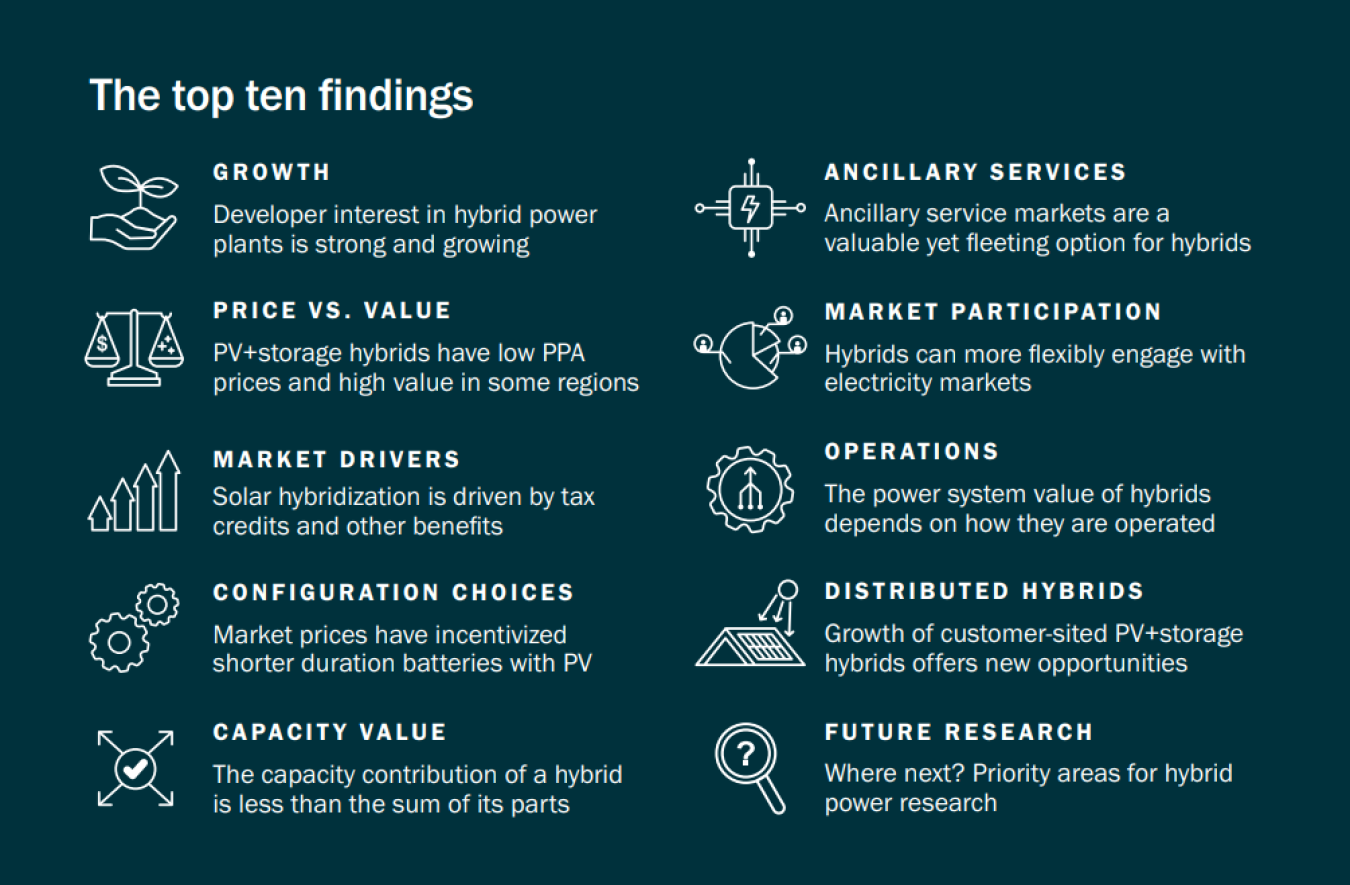One of the most important electric power system trends of the 2010s was the rapid deployment of wind turbines and photovoltaic arrays, but early data suggests a twist for the 2020s may be the rapid deployment of ‘hybrid’ generation resources. Hybrid power plants typically combine solar or wind (or other energy sources) with co-located storage. Just as cost declines drove last decade’s wind and solar expansion, falling battery prices and growing needs to integrate variable renewable energy generation are driving plans to deploy hybrid power plants. While hybridization helps to ease the challenge of balancing variable supply and demand, its relative novelty means that research is needed to facilitate integration and promote innovation. Combining the characteristics of multiple energy, storage, and conversion technologies poses complex questions for grid operations and economics. Project developers, system operators, planners, and regulators would benefit from better data, methods, and tools to estimate the costs, values, and system impacts of hybrid projects. The opportunity for hybrids is clearly large as we move toward greater levels of renewable energy, but their implications and optimal applications have yet to be established. This briefing showcases some of Berkeley Lab’s robust research program intended to support private- and public-sector decision-making about hybrid plants in the United States. We analyze where and why hybrids are being built. We model optimal hybrid design choices and assess hybrid contributions to resource adequacy and short-term reliability. We evaluate how hybrids participate in wholesale power markets and investigate the cost and value of both customer-sited and utility-scale hybrids. Finally, we identify future research needs and questions.


